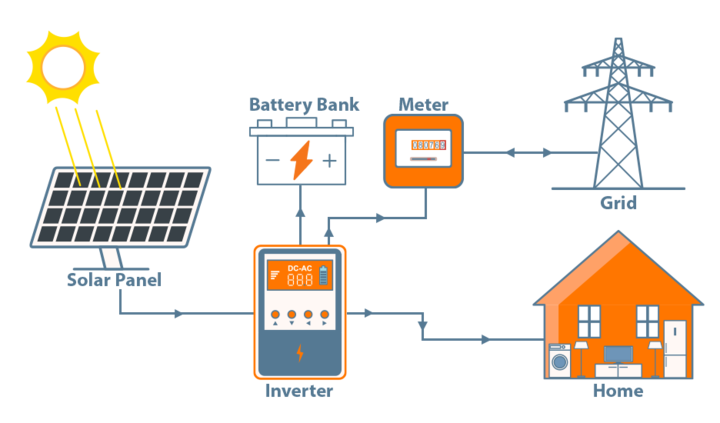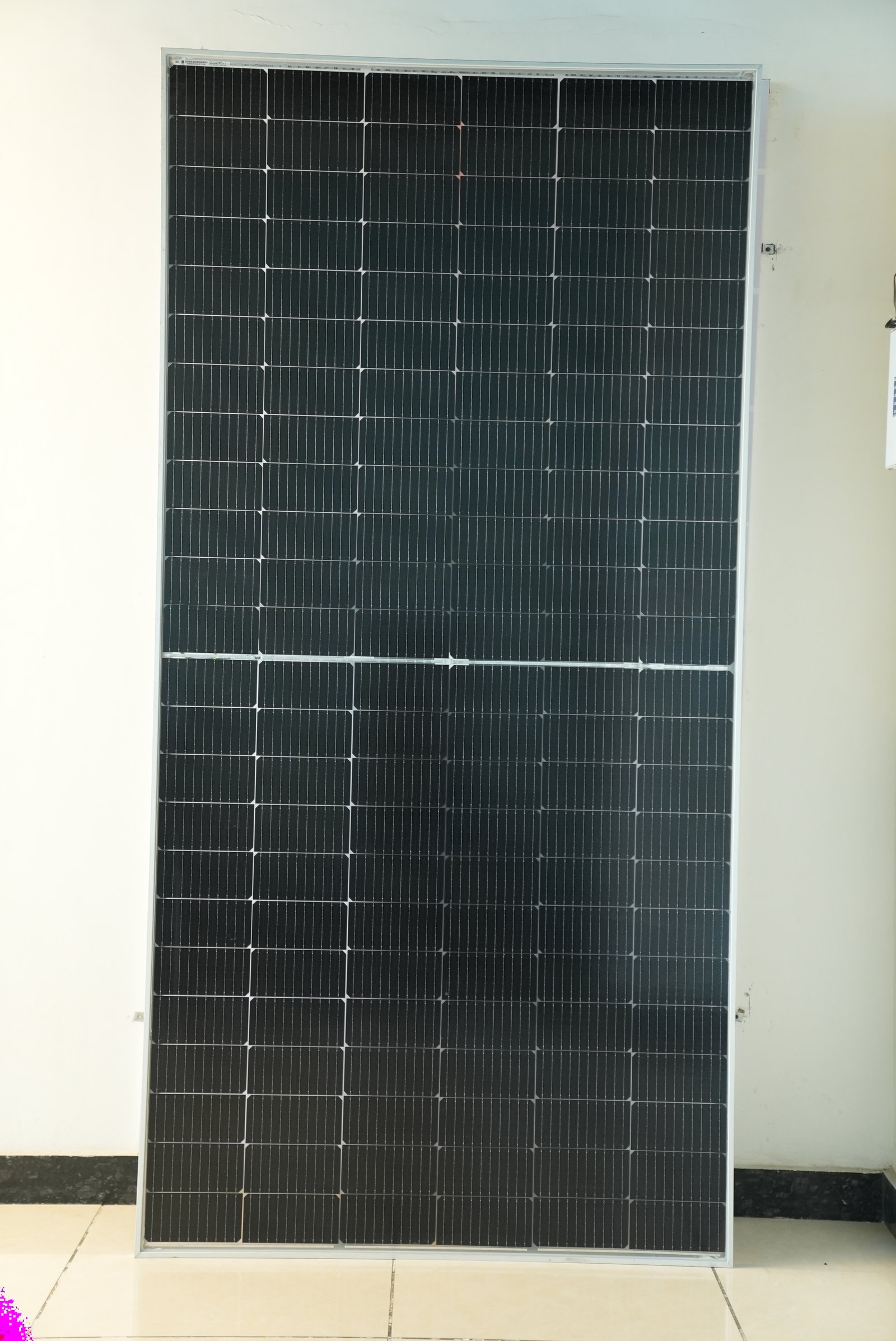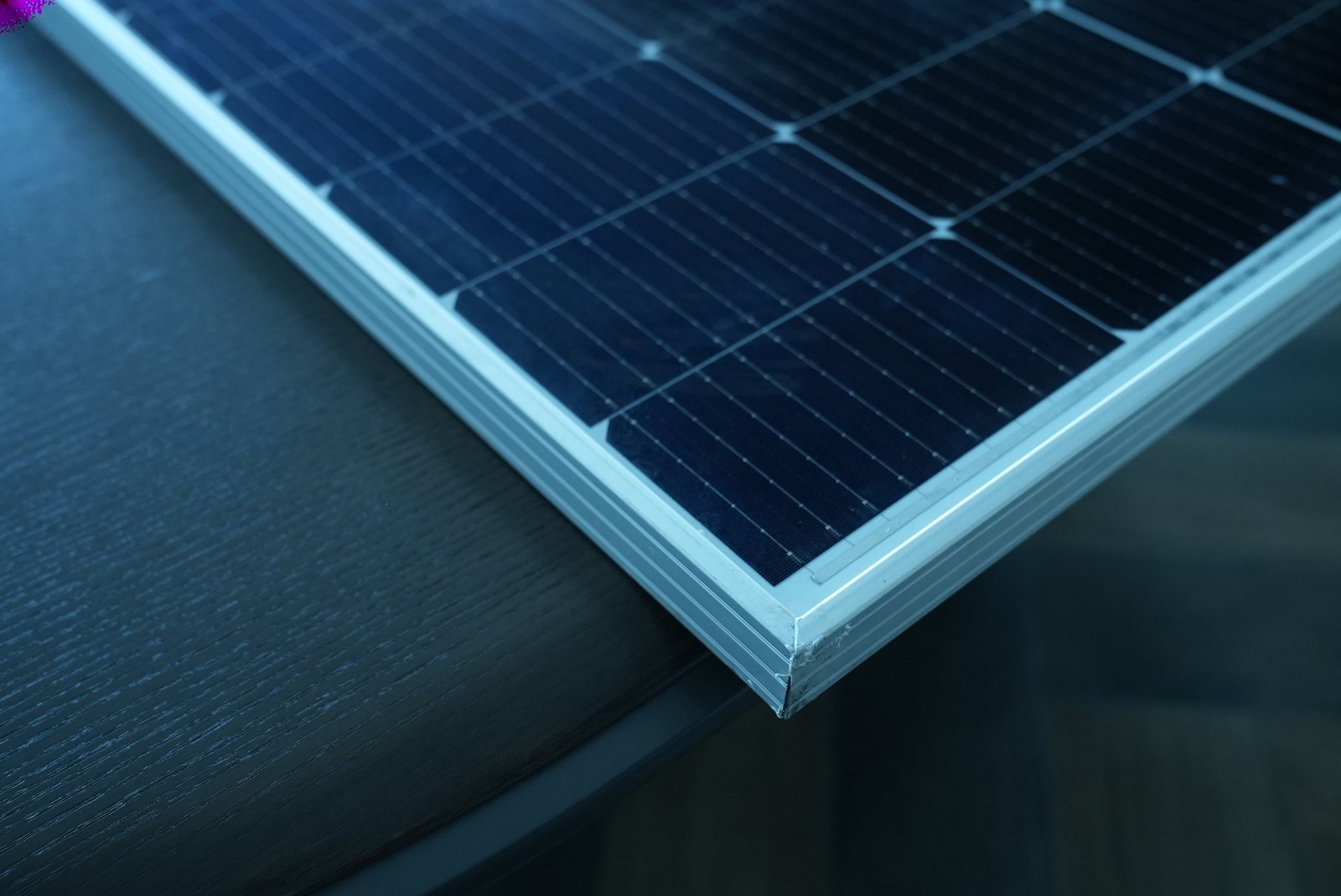Welcome To Alpex
Hybrid Solar Systems for Home- Working, Benefits, Price & Subsidy
Transform your home with Alpex’s cutting-edge solar modules. Experience energy independence and substantial savings on your electricity bills.
Panel Installations
Experienced Engineers
Years of Experience
Customer Satisfaction
What is a Hybrid Solar System?
How Does a Hybrid Solar System Work?

Here is how it works:-
- Solar Panel Energy Collection: Solar panels absorb sunlight and convert it into electricity, which is either used immediately by your home or stored in a battery.
- Battery Storage: The battery stores excess energy generated by the solar panels. This energy is used during the night or when the sunlight is insufficient.
- Grid Connection: If the battery is depleted, and solar energy is unavailable, the system switches to the grid to provide power.
- Inverter Management: An inverter plays a crucial role in converting the DC power generated by solar panels into usable AC power for your home. It also manages the flow of energy between the panels, battery, and grid, ensuring efficient usage.
This seamless switching between solar, battery, and grid power ensures that homeowners always have a reliable electricity supply, making hybrid systems ideal for areas with inconsistent power supply in India.
Benefits of Hybrid Solar Systems for Indian Households
Hybrid solar systems provide a range of benefits, making them an excellent choice for Indian homes and businesses:
1. Reliable Power During Outages: These systems ensure uninterrupted power supply, especially in regions prone to frequent power cuts, allowing households to remain powered even when the grid fails.
2. Cost Savings on Electricity Bills: By utilising solar energy during the day and battery power at night, hybrid systems significantly reduce reliance on the grid, leading to lower electricity bills and long-term savings.
3. Maximising Solar Power Use: Hybrid systems store excess solar energy in batteries, allowing households to use this stored energy during nighttime or cloudy days, preventing wastage and maximising solar efficiency.
4. Environmentally Friendly: By relying on renewable solar energy, hybrid systems help reduce carbon emissions and contribute to a cleaner environment, promoting sustainability.
5. Long-Term Investment: While the initial setup cost may be higher, hybrid solar systems provide substantial savings over time, especially with government incentives, making them a smart long-term investment.
Types of Hybrid Solar Systems Available in India
Hybrid solar systems come in various sizes and configurations, catering to different energy needs and budgets. Here are some types:
Factors to consider before installing an on-grid solar system
The solar panels are the heart of any solar energy system. These panels are made up of photovoltaic (PV) cells that trap sunlight and convert it into direct current (DC) electricity. The efficiency of the solar panels determines how much energy you can generate, which is why choosing high quality panels is crucial.
- Small Hybrid Systems with Basic Battery Storage: These systems are designed for homes with lower energy needs and typically include a small battery to provide backup power during short outages. They are cost-effective and suitable for households that want to reduce their grid dependence without a significant investment.
- Mid-Range Hybrid Systems for Extended Backup: These systems offer larger battery storage and can provide several hours of backup during power cuts. They are ideal for homes or small businesses that experience frequent outages and want a more reliable energy source.
- Large Hybrid Systems for Complete Energy Independence: For those seeking full energy independence, large hybrid systems with substantial battery storage and high-efficiency solar panels are available. These systems can power an entire household for extended periods without relying on the grid, making them perfect for remote areas or homes with high energy demands.
Choosing the right system depends on your household's energy needs, budget, and the extent of power outages in your area.
Cost of Installing a Hybrid Solar Plant in India
The cost of installing a hybrid solar system in India can vary based on several factors:
- System Size: The larger the system, the more expensive the installation. Hybrid solar systems for small households may start around ₹1.5-2 lakhs, while larger systems designed for complete energy independence can cost upwards of ₹5-7 lakhs.
- Battery Capacity: Batteries are a significant portion of the cost. Higher capacity batteries, capable of storing more energy, will increase the total installation price.
- Installation Factors: The complexity of the installation, including the roof's angle and location, may also affect the cost. Additionally, the type of inverter and the quality of solar panels will impact the price.
Government Subsidies and Incentives
The Indian government provides incentives and subsidies through the Ministry of New and Renewable Energy (MNRE) to promote solar adoption. Households can receive up to 40% off the installation cost for residential rooftop solar systems up to 3 kW and 20% for systems between 3 kW and 10 kW. However, it is important to note that these subsidies mainly cover the solar generation component, while battery storage costs may not be included.
Hybrid Solar System Maintenance and Longevity
Hybrid solar systems require regular maintenance to ensure optimal performance. Here are some key maintenance tasks:
1. Solar Panel Cleaning:
Dust, dirt, and debris can accumulate on solar panels, reducing their efficiency. Regular cleaning ensures they capture maximum sunlight and perform optimally.
2. Battery Maintenance:
Battery care is essential for ensuring the longevity of the system. Periodic checks on the battery's health, voltage levels, and performance are necessary to prevent degradation over time.
3. Inverter Maintenance:
The inverter is the heart of a hybrid system, so keeping it in good working condition is crucial. Most inverters come with monitoring systems that alert homeowners if there are issues, making it easier to address problems early.
When maintained properly, hybrid solar systems can last 20-25 years, with battery replacements required every 5-10 years depending on usage.
Conclusion
For homeowners looking to invest in a long-term, cost-effective, and eco-friendly energy solution, hybrid solar systems are a clear choice. Whether you are in a rural area with an inconsistent electricity supply or an urban home looking to minimise energy costs, hybrid solar panels can provide the reliability and savings you need. With government incentives and technological advancements continuing to make these systems more accessible, now is the perfect time to consider switching to hybrid solar energy.
Featured Products
Our product range includes:



